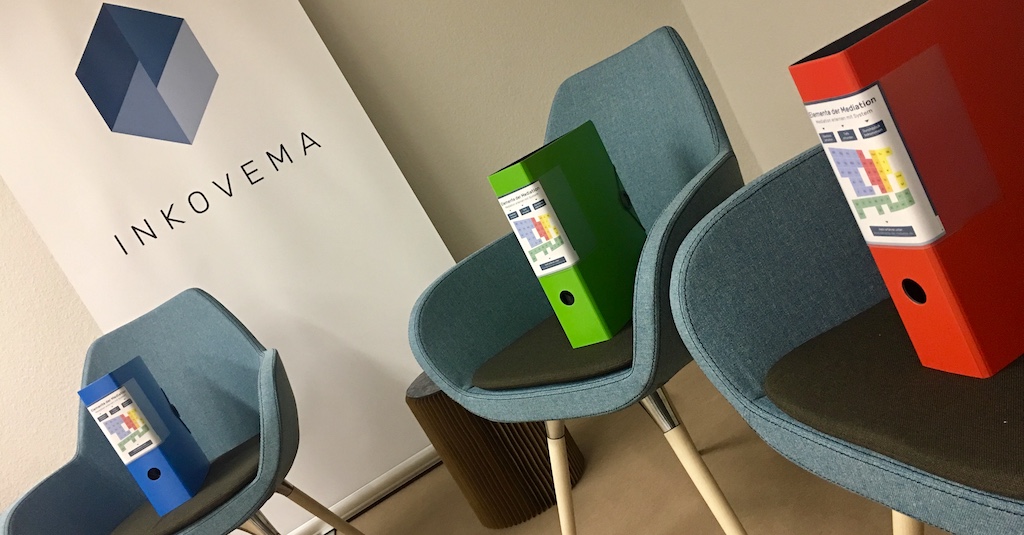Training in mediation in accordance with the legal requirements of § 5 of the Mediation Act. A collection of curiosities.
25 Basics of mediation (25)
Introduction
Much has already been said and written about training to become a certified mediator. Unfortunately, however, little good. However, behind the training programme issued on 21.08.2016 Certified Mediator Training Ordinance (ZMediatAusbV) a sensible concern:
- Strengthening the professional image of the mediator
- and ensuring training that meets the requirements of the complex conflict resolution process of mediation.
Well thought out - badly done
…This conclusion is obvious when you read the "Report of the Federal Government on the Effects of the Mediation Act on the Development of Mediation in Germany and on the Situation of the Training and Further Education of Mediators" published in July 2017:
"The certification of mediators, as it is currently organised, has noülittle relevance for users"
is a central statement of the report.
Nevertheless, in this article we would like to take a brief look at the relevant training regulations and curiosities. After all, the ZMediatAusbV still applies and points the way for a large number of training candidates to become certified mediators.

I. Mediation training
In principle, anyone can call themselves a mediator in Germany. The requirements of the Mediation Act are hardly worth mentioning. Only those professionals whose professional organisation limits this designation are subject to restrictions. E.g. lawyers – they are (inevitably) integrated into bar associations and are subject to the rules of the bar association. professional regulations. And with regard to the designation "mediator" or „mediator“, the vast majority of bar associations require recognised training with at least 90 hours of training.
In contrast, the term "certified Mediator" is legally protected by § 5 Para. 2 MediationsG:
"Anyone who has completed training as a mediator that fulfils the requirements of the legal ordinance pursuant to Section 6 may call themselves a certified mediator."
The training requirements are set out in the Certified Mediator Training Ordinance (ZMediatAusbV) concretised. According to Section 2 (2) ZMediatAusbV, the training programme consists of a training course and individual supervision.
1st training course
The regulation in Section 2 (4) ZMediatAusbV requires a total of 120 attendance hours, whereby the self-study and external study phases do not count towards the minimum quotas. In accordance with § 2 Para. 3, the training must also include practical exercises and role plays (empathy exercises; simulations) and cover the content specified in the annex to the ordinance in a rough structure and broken down by hours.
Curiosity no. 1:
The trainers themselves do not have to have the qualification to which they qualify. In fact, it is more likely and easier to be a mediation trainer than a mediator!
§ Section 5 of the ZMediatAusbV merely stipulates that the active teachers "must have a have a professionally qualifying qualification from a vocational training programme or a university degree" and "the necessary specialist knowledge". Ultimately, therefore, none of the trainers need to be (certified) mediators themselves. Nor do they have to have ever conducted a single mediation themselves. Participants can therefore theoretically be trained as certified mediators without even having come into contact with a "real" (i.e. certified) mediator during their training!
2. individual supervision
In addition to participating in the training course, participants must (co-)mediate their own case during the course or within one year of completing the course and then reflect on it together with a supervisor, Section 2 (5) ZMediatAusbV.
Curiosity 2:
Anyone can carry out supervision. There are no requirements for the supervisor. Even the other training candidates could carry out the supervision themselves. Neither the MediationsG nor the ZMediatAusbV sets any requirements for the qualification of the supervisor.
3. (Self-)certification
Finally, the training institution then issues a certificate of successful completion of training in accordance with Section 2 (6) ZMediatAusbV, whereby the individual supervision is part of the certificate and does not require a separate certificate.
Curiosity 3:
Certification without a certification body and certification act – A special legal or awarding act by an independent public or private institution, as is usually the case with certifications, is not required. Instead, each certification body certifies itself under its own responsibility. The above-mentioned certificate has no constitutive effect and is merely an indication that the requirements have been met. With the so-called self-certification, the Mediation Act has introduced a new certification concept based on self-regulation independent of the state. However, contrary to what the legislator intended, no body organised under private law (association, mediation association) has developed which in turn certifies training centres, which in turn distribute training certificates to the participants.
II Further training
§ Section 5 (3) MediationsG also obliges the certified mediator to undergo regular further training in accordance with the provisions of the ZMediatAusbV.
The certified mediator must complete at least 40 hours of further training within 4 years of the training certificate being issued.
§ Although Section 5 (2) Mediation Act (MediationsG) specifies certain objectives of the training events, the mediator is completely free to choose the content of the training, for example with regard to fields or forms of mediation.
In addition, mediators must carry out four individual supervisions of one (co-)mediation each in the first two years, § 4 Para. 1 ZMediatAusbV.
Supervision for mediators – Regularly here at INKOVEMA
Other than originally required (4 procedures every 2 years, incl. documentation obligation), However, no ongoing mediation practice is required beyond the first two years.
Curiosity 4:
Once certified, always certified? So far there is no Regulation regarding recertification or the withdrawal of the designation authorisation in the event of violations (e.g. of the training and supervision provisions). They are simply not provided for in the law. At best, there is control via competition law. In principle, this may fulfil the Concept of the Activating State but is inadequately implemented here.

III Conclusion
The Certified Mediator Training Ordinance Unfortunately, it could hardly contribute to strengthening the profession of mediator and ensure greater market transparency. Ultimately, the regulation perpetuates the fundamental shortcomings that were already inherent in the Mediation Act. Neither has the tension between self-regulation and external regulation between state supervision and market organisation been balanced, nor has it been possible to interweave the individual elements coherently. Rather, it is possible to speak of a weaving error that runs from the law through the ordinance.


